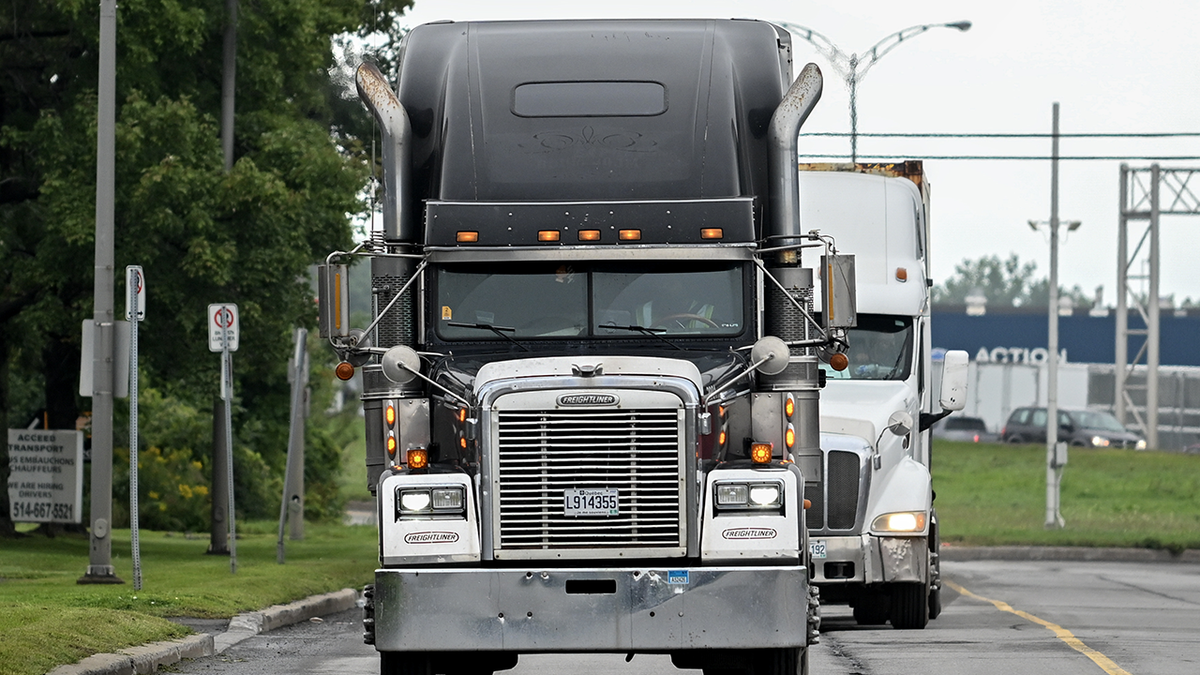American truck drivers are sounding the horn on the Biden administration’s recently-finalized environmental regulations that aim to push for the heavy-duty vehicle sector to go all-electric.
The truckers voiced concerns that electric heavy-duty vehicle technology is not nearly advanced enough to replace the nation’s existing diesel-powered fleet, noting limitations on vehicle batteries, like low performance in cold weather conditions and shorter range. They also warned that the lack of high-powered charging infrastructure and power grid upgrades needed for fueling vehicles would present additional problems.
“I’m an owner-operator. I’ve been in the business for 30 years,” Mike Nichols, a Wisconsin-based trucker, told Fox News Digital in an interview. “Even if they subsidized the cost of the electric vehicle 100%, I still would refuse because I still would go broke. That’s how useless they are. If they gave me one of these things, I still wouldn’t take it.
“EV trucks don’t do as much work. They’re heavier, so they can’t haul as much. They don’t go as far. They take longer to charge,” Nichols added, saying he wouldn’t be able to run his business if he were forced into using an electric vehicle.
FEDERAL COURT STRIKES DOWN BIDEN’S CLIMATE RULE FOR STATES
“So, you’re going to need more trucks on the road, which is completely the opposite of what we would want if we were actually concerned about bettering our society.”
On Friday, the Environmental Protection Agency finalized the regulations, which kick in beginning in 2026 for model year 2027 vehicles. The regulations gradually become more stringent through model year 2032, affecting short-haul and long-haul tractor-trailer trucks and vocational trucks like delivery vehicles, school and public transit buses, and garbage trucks, concrete trucks and fire trucks.
EPA previously projected the standards could lead to 50% of vocational trucks, 35% of short-haul tractor-trailers and 25% of long-haul tractor-trailers produced in 2032 being electric.
INTERNATIONAL CODE COUNCIL REJECTS AGGRESSIVE GREEN ENERGY HOME BUILDING CODE MANDATE
While the average diesel-powered semi-truck has a typical range of between 1,500 and 2,000 miles, depending on its mileage and tank size, the highest-end electric semi-truck, Tesla’s Semi model, has a range of 500 miles. And most other electric models have ranges below 330 miles, according to data compiled by Ptolemus Consulting Group.
In addition, electric trucks can take as long as three hours to fully charge, the data showed, while diesel truck tanks can usually be filled in 20 minutes or less.
At the same time, despite the lower efficiency, according to the International Council on Clean Transportation, the average electric truck typically costs around $300,000, while traditional diesel models are half that price on average.

Nichols noted that an additional problem with electrifying heavy-duty vehicles is the impact on trucks that need to execute a power takeoff — for when the vehicle is stationary — but the engine is running to operate another function, such as a hydraulic system, pump or blower. He couldn’t say how a battery-powered truck would perform these tasks.
The American Trucking Associations estimates trucks transported a whopping 11.5 billion tons of freight in 2022, equivalent to about 72% of total tonnage shipped nationwide.
CONSUMER GROUP REVEALS LEFT-WING GROUPS INCREASINGLY USING COURTS TO PUSH GREEN NEW DEAL
But less than 1% of new truck sales in the U.S. are zero emissions, according to the Truck and Engine Manufacturers Association, which represents the world’s leading manufacturers of heavy-duty vehicles. While the U.S. would need 28 million charging ports by 2030 to meet electrification goals, according to the National Renewable Energy Laboratory, there are currently only 160,000 such ports.

“This administration just continues to put out regulations on truckers and small business trucking without any knowledge or even trying to get the knowledge of what these truckers have to go through. This is just so frustrating to me,” Lewie Pugh, who drove a truck for 25 years and serves as executive vice president of the Owner-Operator Independent Drivers Association (OOIDA), said in an interview.
“Truckers want clean air, clean water but there are certain ways to go about it. We’re passing mandatory laws on technology that’s not even invented, and nobody knows what the cost is going to be.”
Pugh raised concerns that the U.S. power grid isn’t ready for such an increase in the level of electrical demand that would be sparked by trucks being plugged in so frequently. A December 2022 study by the American Transportation Research Institute determined the full electrification of the U.S. transportation sector would require a 40% increase in generation and transmission capacity compared to the current grid.
BIG OIL COMPANIES ASK SUPREME COURT TO INTERVENE IN HIGH-STAKES CLIMATE CASE
In addition to individual truckers and OOIDA, other industry groups such as the American Trucking Associations and American Bus Association came out against the EPA’s regulations, characterizing them as “burdensome, expensive and rife with a series of long-term issues.”
In response to the criticism it has received, the EPA pointed to its original explanation of the regulations. The agency told Fox News Digital it would monitor implementation of the regulations in the coming years to determine whether any potential adjustments to the program are warranted.
“The rule will deliver substantial public health benefits, while at the same time ensuring fleet owners and operators the flexibility to choose the vehicle technologies best suited to their operations,” EPA said in a statement.
The White House didn’t respond to a request for comment.
Read the full article here